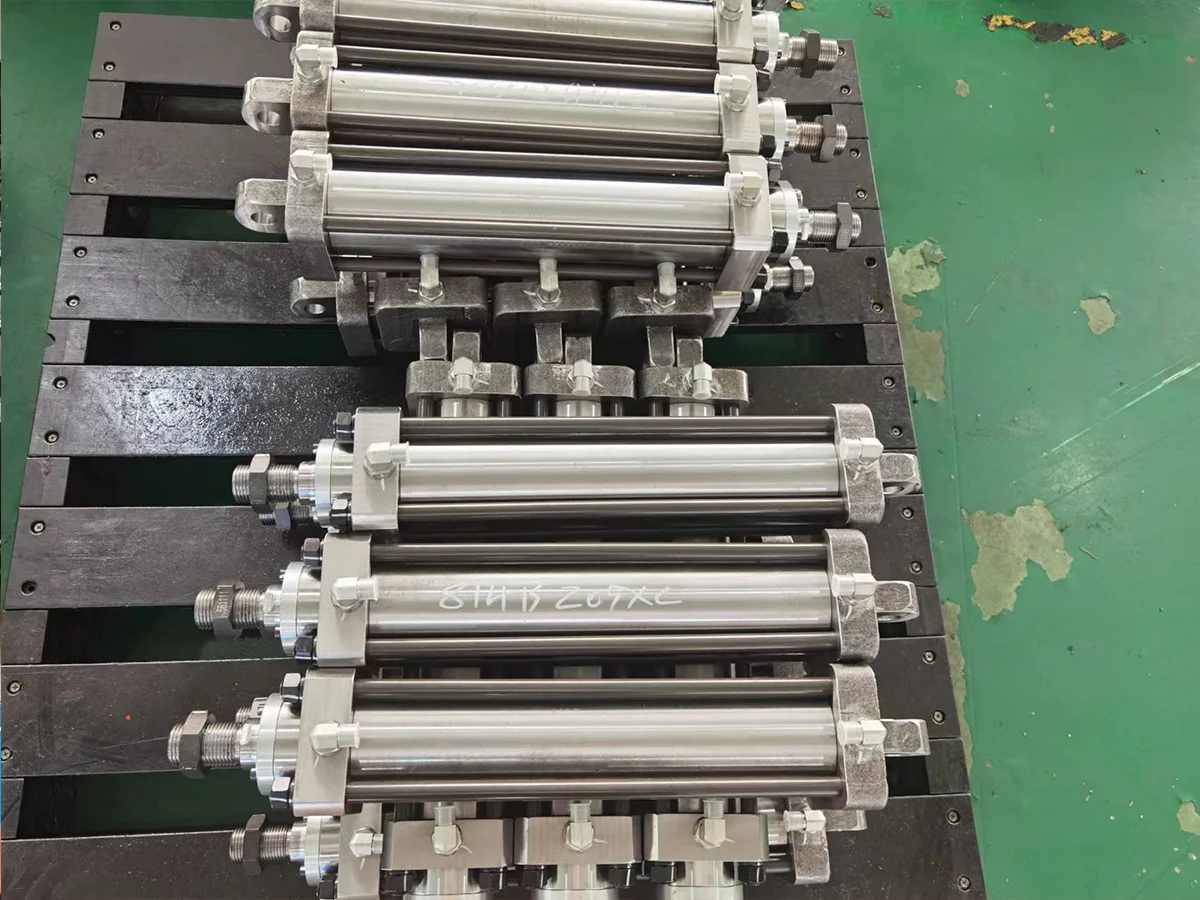- This topic is empty.
-
AuthorPosts
-
19/03/2024 at 14:23 #1635
This article takes an in-depth look at the manufacturing process and quality control process of tie rod cylinders. By analyzing material selection, processing methods, surface treatment technology, and strict quality inspection standards, the key steps in producing high-quality tie rod cylinders are revealed.
The tie rod cylinder is an indispensable component in the car's steering system. It ensures that the wheels maintain correct alignment, thereby providing stable driving performance and vehicle safety. A high-quality tie rod cylinder requires precise manufacturing processes and strict quality control. This article details the production process and quality assurance measures for this critical component.

1. Material selection and preparation
In the production of tie rod cylinder, you first need to select the appropriate material. Typically, tie rod cylinders are made of high-strength steel or aluminum alloy to ensure their durability and reliability. Materials must undergo rigorous testing and comply with industry standards and specifications. In addition, materials need to undergo appropriate pre-treatment, such as annealing or pre-cleaning, to remove stress and surface impurities before entering the production line.
2. Precision processing
The manufacture of tie rod cylinders involves a series of precision machining steps such as forging, turning, drilling and grinding. These processes require high-precision equipment and technology to ensure the dimensional accuracy and surface finish of the product. Numerically controlled machine tools (CNC) play a central role in this process, enabling them to automatically process according to preset programs, thereby reducing human error and increasing production efficiency.
3. Surface treatment and protection
In order to improve the corrosion resistance and wear resistance of tie rod cylinder, surface treatment is an important link. Common surface treatments include chrome plating, zinc plating or applying special coatings. These treatments form a protective film that effectively prevents oxidation and wear. In addition, some high-performance tie rod cylinders may also use heat treatment processes to enhance their hardness and load-bearing capacity.
4. Welding and assembly
For tie rod cylinders composed of multiple parts, welding and assembly are crucial steps. Using automated welding technology allows for uniform and stable welds, ensuring the structural integrity of the component. During the assembly process, various fasteners and small accessories need to be assembled onto the main body accurately to ensure the overall performance of the product.
5. Quality inspection and control
Quality control is the most critical part of the entire production process. Each production stage is accompanied by a series of inspections and tests. This includes but is not limited to:
Dimensional inspection: Use tools such as calipers, vernier calipers, and coordinate measuring machines to verify dimensional accuracy.
Surface inspection: Identify surface defects through visual inspection and eddy current testing.
Performance testing: The tie rod cylinder is subjected to pressure testing and long-term running testing to ensure its reliability under extreme conditions.
Durability evaluation: Corrosion resistance is evaluated through salt spray testing and cyclic corrosion testing.
All non-conforming products are removed and subjected to root cause analysis to prevent recurrence of quality issues.
In order to remain competitive, tie rod cylinder manufacturers continue to pursue process optimization and technological innovation. At the same time, employees are trained regularly to ensure they have the latest skills and knowledge.
The tie rod cylinder's manufacturing process and quality control are key factors in ensuring its performance and reliability. Through careful material selection, precision machining, professional surface treatment, and strict quality inspection processes, manufacturers are able to produce high-quality tie rod cylinders that meet high standards. Continuous process improvement and technological innovation will further promote the development of the industry and provide users with a safer and more reliable driving experience.
Why is the tie rod cylinder popular?
How to choose the right tie rod cylinder for your hydraulic system
Tie rod cylinder maintenance and care guide
Tie Rod Cylinder: The backbone of industrial applications
Choosing the right tie rod cylinder: the perfect match for your engineering needs
Analyze the structure and working principle of tie rod cylinder
Hydraulic weapon: tie rod cylinder classification analysis and application
Key components in hydraulic systems: reliability and life evaluation of tie rod cylinder
How to choose a quality tie rod cylinder manufacturer: key strategies and considerations
Protect your investment: effective anti-corrosion measures for tie rod cylinders
Hydraulic tie rod cylinder sealing technology: the key to optimized performance and extended life
Detailed explanation of precautions and operating procedures for safe use of tie rod cylinders
Factors and analysis affecting the price of tie rod cylinders
Material selection for tie rod cylinders: a balance between performance and application
tie rod cylinder and welded cylinder, which one to choose?
Key factors in selecting tie rod cylinder size specifications
Analysis of the working environment of tie rod cylinder
The history and future development trends of tie rod cylinder
Sealing structure and application of tie rod cylinder
Matching and application of tie rod cylinder in hydraulic system
Application of tie rod cylinder in automobile manufacturing field
-
AuthorPosts
- You must be logged in to reply to this topic.